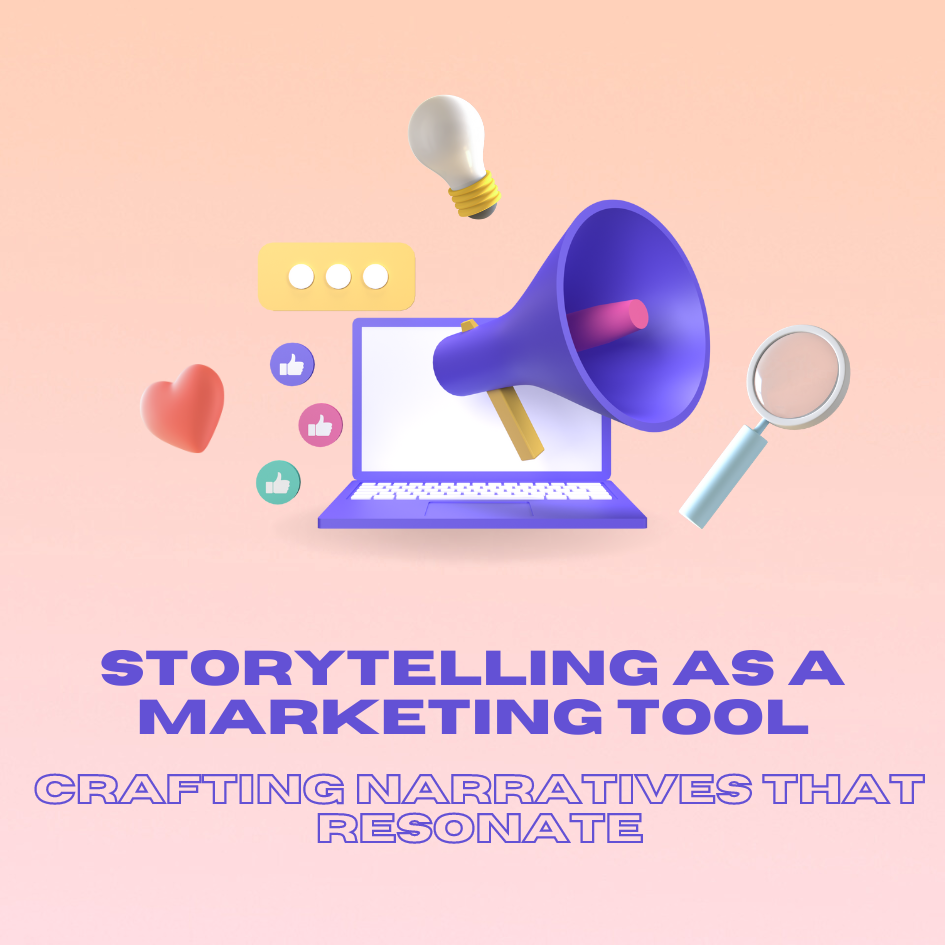
25 Aug Storytelling as a Marketing Tool: Crafting Narratives That Resonate
In today’s swiftly evolving marketing landscape, where consumers confront a deluge of information and diverse choices, storytelling has become a formidable strategy for brands to rise above the noise and establish profound audience connections. Compelling storytelling transcends typical marketing messages; it involves crafting narratives that evoke emotions, establish relationships, and leave enduring imprints. A particularly intriguing facet of marketing storytelling is its ability to forge emotional bonds. Emotions serve as the bedrock of human decision-making, and when brands create narratives that resonate emotionally, they build connections beyond mere transactions.
For instance, Progressive’s humorous and relatable Flo, the face of the insurance brand, exemplifies the power of storytelling. Through Flo’s ongoing interactions with customers and her journey from an employee to a well-known icon, Progressive has humanized its brand, creating an emotional bond with customers. Similarly, Coca-Cola’s “Share a Coke” campaign, with personalized bottles bearing popular names, triggered emotions of joy and personalization. This initiative spurred product sales and invited consumers to actively participate in the brand’s narrative actively, further cementing their connection. By weaving emotional narratives, brands can foster meaningful relationships that transcend the transactional and build lasting brand loyalty.
Authenticity is a prized quality in today’s marketing landscape, and storytelling offers a platform for brands to humanize themselves, showcase their values, and build trust with their audience. Airbnb’s “Belong Anywhere” campaign is a prime example of this approach. By sharing personal stories from hosts and travelers, Airbnb transforms its image from a simple accommodation booking platform to a conduit for genuine human connections and experiences. These stories convey authenticity, allowing the audience to see the real people behind the listings and creating a sense of trust. Patagonia’s outdoor apparel brand also excels in authenticity through its “Worn Wear” initiative. By featuring stories of well-worn clothing items and emphasizing sustainability, Patagonia showcases its commitment to longevity and environmental responsibility. This approach resonates with conscious consumers and reflects the brand’s authentic dedication to its principles. In both cases, storytelling allows these brands to go beyond product features and into shared values and genuine connections with their audiences.
Narratives of Transformation: Putting Customers at the Center
Compelling narratives often revolve around transformation, where the brand catalyzes positive change in the customer’s life. Weight Watchers, for instance, employs this strategy by showcasing real stories of individuals who have successfully achieved healthier lifestyles through their program. These narratives highlight the effectiveness of the brand’s offerings and create a sense of community and support among those on a similar journey. The journey from struggle to success resonates deeply, motivating potential customers to consider the brand as a solution to their challenges. Similarly, Under Armour’s “I Will What I Want” campaign spotlights stories of women overcoming obstacles and societal expectations to achieve their goals. By celebrating personal growth, empowerment, and resilience, Under Armour’s narratives resonate with audiences seeking inspiration and self-improvement, creating an emotional connection beyond the products themselves.
Cultural Relevance: Aligning with Shared Experiences
In today’s diverse and interconnected world, cultural context plays a pivotal role in crafting resonating narratives. Nike’s “Equality” campaign is a testament to cultural relevance’s power. By sharing stories from athletes confronting discrimination and inequality, Nike aligns itself with the global conversation about social justice. This alignment not only underscores the brand’s values but also resonates with a diverse and passionate audience that sees the brand as a champion of critical societal issues. By aligning with shared experiences and cultural touchpoints, brands can develop narratives that feel authentic, relatable, and genuinely resonant to their audience.
In conclusion, storytelling has evolved from a simple communication technique to a cornerstone of effective marketing strategies. By forging emotional connections, embracing authenticity, spotlighting customer-centric transformations, aligning with cultural relevance, and engaging through suspense, brands can create narratives that deeply resonate with their target audience. As the marketing landscape continues to evolve, those skilled at mastering the art of storytelling will be well-positioned to capture attention, foster loyalty, and create enduring brand relationships.
Want to know more?
Want to know more? Visit prorelevant.com to find out how you can customize your marketing efforts.
Check out my previous articles about Marketing KPIs and The Intersection between Generative and Analytical AI.
References
“Airbnb – Belong Anywhere.” YouTube, YouTube, 1 June 2015, www.youtube.com/watch?v=jcVFigGq1_I.
“Gisele Bündchen – I Will What I Want.” YouTube, YouTube, 4 Sept. 2014, www.youtube.com/watch?v=H-V7cOestUs.
Oakenfull, Gillian. “Marketing with Cultural Intelligence for Growth and Good.” Forbes, Forbes Magazine, 2 June 2022, www.forbes.com/sites/gillianoakenfull/2021/04/07/pg-brands-lead-with-cultural-intelligence/?sh=226cf57424b8.
“Rest Stop | Progressive Insurance Commercial.” YouTube, YouTube, 27 Mar. 2023, www.youtube.com/watch?v=SeQTI-L0Wak.
“Share a Coke Campaign 2019.” YouTube, YouTube, 27 Oct. 2019, www.youtube.com/watch?v=sGjQnGio5mw.




No Comments